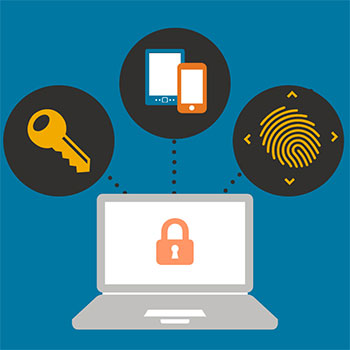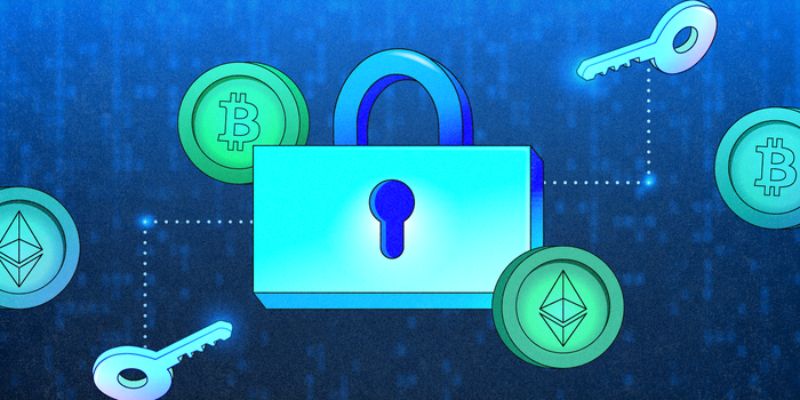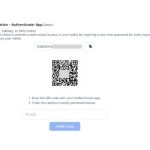How to create a strong password for your crypto wallet isn’t just a task; it’s an essential line of defense against the lurking threats of the digital world. Let’s face it, your crypto wallet is a treasure chest that hackers are itching to crack open. So, if you want to keep your digital gold safe, you need a vault-like password that no one can guess or break. As you dive into my powerful strategies, from the basics of security to advanced tips on password creation and technological safeguards, you’ll learn to build an unbreakable barrier for your precious assets. Get ready for straightforward, actionable steps that will transform the way you protect your wallet—no jargon, just strong security.
The Foundation of Crypto Wallet Security: Understanding the Basics
The Importance of Password Complexity for Wallets
When you secure your house, you use a sturdy lock. The same goes for crypto wallets. A strong password acts like a strong lock. It keeps hackers away from your precious coins. To stop hackers, your password must be complex. That means it should be long and full of different types of characters.
Mix up letters, numbers, and symbols. Never use simple passwords like “1234” or “password”. Those are easy for bad guys to guess. Password complexity for wallets is your first defense. A good passphrase is like a secret code that only you know. Make your password at least 12 characters long. Use uppercase and lowercase letters too.
This mix-up makes it harder for thieves to crack your password. They might use programs that try many passwords fast. This is called a “brute force” attack. But if your password is strong and complex, their attacks won’t work.
Encryption and Private Key Protection Measures
Encryption is like a secret language that scrambles your data. It makes sure that only people with the right key can read your info. Your crypto wallet uses encryption to keep your coins safe. Your private key is a big part of that. It is a secret code that lets you into your wallet. You must keep it safe from hackers and thieves.
Use a new email address when you set up your wallet. This email should be just for your crypto stuff. Also, use a password you have never used before. Make sure this password is strong and complex too. Write down your private key and keep it in a safe place at home. Do not leave it on your computer.
Always have more than one copy of your private key. But do not keep it in obvious spots like your desk drawer. Thieves know to look there. Hide it well or use a safe. Also, you can use two-factor authentication for wallets. This adds another step to the lock on your wallet.
Even if someone guesses your password, they need another code that only you can get. This could be a text message on your phone. It’s like having a lock with two keys. Thieves need both to get in, which is really hard. Always stay aware of the latest ways to keep your wallet safe. Hackers always think of new tricks. So must we.
Remember, keeping your crypto wallet safe is like caring for a treasure. Use a strong password and protect your private key. Think about how you keep your house and family safe. Use the same care with your digital money. This is how you prevent others from taking what is yours. Your financial safety depends on these steps, so take them seriously.
Crafting the Unbreakable: Techniques for Password Creation
High-Entropy Passphrase Generation Tips
Ever wonder how to keep bad guys away from your crypto? Start with a strong password. Think of your password as a secret code that only you know. A high-entropy passphrase is like a super secret code. Harder to guess, it’s your best bet for security.
Now, let’s dive deep. “Entropy” means unpredictability. So, high-entropy passphrases are harder to predict. Use long and random words. Mix it up with numbers and symbols. The more random, the better. Keep bad folks guessing. They won’t stand a chance!
Character Variety and Length for Ultimate Strength
For wallet passwords, think long and varied. Each extra letter or symbol is another layer of armor for your wallet. Aim for at least 12 characters. Include capitals, numbers, and symbols like ! or %. It’s like having different types of locks on a door. The more complex it is, the safer your crypto stays.
Don’t use easy-peasy passwords like “123456”. That’s like leaving your house with the door open. Hackers love those. So don’t make it easy for them. Make your password a tough nut to crack!
Use different passwords for different sites, too. If one password leaks, your crypto is still safe. Mix and match your letters, numbers, and symbols. It’s like a recipe for a very strong shield.
Remember, a good password is like a good secret. The less it makes sense, the more secure it is. Keep your crypto safe by getting creative with your passwords. Your digital wallet will thank you!
Technological Aids to Secure Your Digital Wallet
Employing Password Managers for Crypto Wallets
We all know keeping crypto wallets safe is a big deal. But let’s face it, with all the passwords we have to remember these days, it’s tough to keep track of another complex one. That’s where password managers come in handy. They create and store your passwords for you. So, you only need to remember one strong password to access them all.
When you use a password manager, you boost your security game. It makes sure each password is long and mixed up with all sorts of characters—numbers, symbols, the works. This way, hackers have a hard time cracking your wallet’s code, preventing digital wallet theft.
Think of it as a secure treasure chest where your passwords are like precious jewels. Password managers guard them with tough encryption. It’s like having a digital lock that only you have the key for.
Harnessing Two-Factor and Multifactor Authentication
Now let’s talk layers. Security layers, that is. Just like you put on a jacket over your shirt on a cold day, two-factor and multifactor authentication adds layers to your digital wallet safety.
Here’s the deal. Even if a bad guy gets your password, they won’t be able to get into your wallet without this extra step. Two-factor means two types of checks. Maybe it’s a text with a code sent to your phone or a fingerprint. Either way, it’s a second “yes, it’s really me” before anyone can touch your coins.
Multifactor kicks it up a notch. It uses more than two checks for who you are. It’s like a guard asking for your ID, then checking if you have the secret handshake, and maybe even a special code word. It’s super secure.
And, folks, it’s not rocket science to set up. Most wallets and services have a way to turn these on. Just dive into your security settings, and follow the steps. It’s like putting on your seatbelt—click it on, and you’re way safer.
Combining password managers and authentication layers, you’re stepping up your crypto wallet security big time. It may seem like extra steps at first. But trust me, it’s worth it to keep those digital dollars safe. I mean, we lock our car doors, right? This is just locking your digital doors.
With all this tech at our fingertips, there’s no excuse for weak passwords or lax security. It’s about making the bad guys’ job so hard they just give up and move on. Stay sharp, stay secure, and keep your crypto safe. Remember, a few extra seconds spent logging in beats losing sleep over stolen Bitcoin!
Maintaining and Recovering Your Wallet Security
Strategies for Regularly Updating Wallet Passwords
Did you know changing your wallet password regularly can shield you from hacks? An old password is like a worn lock, easier to break. Create a schedule to update your passwords, perhaps every three to six months. When you make them new, think of a whole fresh set. Don’t just tweak the old ones. It’s like changing the entire lock, not just the key.
Make every wallet password unique. Using the same one for different wallets is a big no-no. It’s like having one key for everything. If it gets stolen, everything’s at risk. Get creative. Mix letters, numbers, and symbols. The more random, the better. Remember, simple is breakable; complex is secure.
Implementing Backup Solutions and Password Recovery Options
A backup plan for your crypto wallet is your safety net. Imagine losing your password. Without a recovery option, your crypto might be gone for good. But, if you have backup keys or recovery phrases stored safely, you can breathe easy. Always backup your wallet. Do it on a physical paper, a USB drive, or encrypted cloud storage. Keep them off the net to fend off hackers. That’s cold storage, and it’s super safe.
Recovery phrases can rescue lost wallets. Write down the unique words your wallet gives you. This special mix of words can restore your stuff if disaster strikes. Hide them like treasure. Think of creative places to stash them at home or elsewhere. They’re your last line of defense, so guard them with your life.
And there’s more you can do. Consider password managers. They remember your passwords so you don’t have to. They’re like secret keepers for your digital keys. Plus, many offer recovery options if you forget your master password.
Security isn’t just about a strong lock. It’s also about having a spare key in the right hands. Regular updates and solid backup plans keep your crypto assets under lock and key, where only you can reach them. Remember, the goal is to keep your digital wallet as secure as your heart and soul. Because in the crypto world, being protected is being empowered.
In this post, we explored the key steps to make your crypto wallet tough against threats. We started with the basics of crypto wallet security, stressing the need for complex passwords and strong encryption. Next, we tackled how to craft robust passwords with a mix of characters and length. We also talked about using password managers and extra layers of security like two-factor authentication.
To wrap it up, keeping your digital wallet secure isn’t just about the setup. It’s about regular updates and smart backup strategies to recover your access if needed. Stay alert, stay informed, and keep your crypto safe with these tips. Trust me, taking these measures will give you peace of mind in the ever-evolving world of cryptocurrency.
Q&A :
What is the best strategy to create a strong password for a crypto wallet?
Creating a strong password for your crypto wallet is crucial to ensure the security of your digital assets. A robust strategy involves using a combination of upper and lower-case letters, numbers, and special characters. Aim for a password that’s at least 12 characters long and avoid using easily guessable information such as birthday dates or common words. It’s recommended to use a passphrase with unrelated words to improve complexity while remaining memorable.
How often should I change my crypto wallet password?
For optimal security, it’s advised to change your crypto wallet password regularly, such as every three to six months. However, the frequency can depend on your account activity levels and the current threat environment. Keep in mind that every time you change your password, you need to ensure that the new one is unique and not reused from other accounts or previous passwords.
Can using a password manager help secure my crypto wallet?
Yes, using a password manager can significantly enhance the security of your crypto wallet. It allows you to generate and store complex passwords without the need to memorize them. This ensures that each of your passwords is strong and unique. Moreover, password managers often come with additional security features such as two-factor authentication and encrypted storage.
Is two-factor authentication necessary for a crypto wallet?
Absolutely, two-factor authentication (2FA) is an essential layer of security for your crypto wallet. It adds an additional verification step beyond just the password, which can help prevent unauthorized access. Even if someone manages to guess or steal your password, they would still require access to the second factor, which is typically a mobile device or email account, to gain entry to your wallet.
What are some common mistakes to avoid when creating a crypto wallet password?
When crafting a password for your crypto wallet, avoid common mistakes such as using personal information, dictionary words, or simple patterns (like “1234” or “password”). Reusing passwords across multiple accounts is also a significant risk. Always steer clear of writing down your password or saving it in an unencrypted file, and refrain from sharing it with others.





